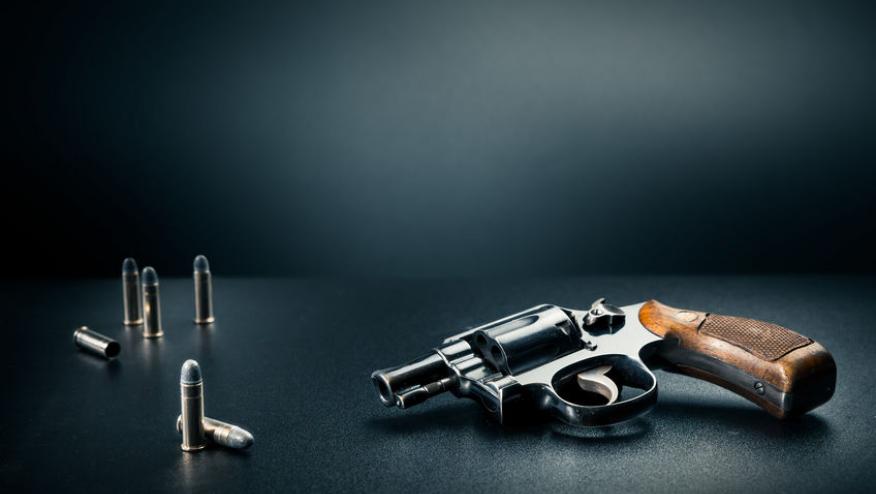MMWR: Death by Firearms Save

The CDC's Morbidity and Mortality Weekly Report (MMWR) reports that during 2015–2016 there was a total of 27,394 firearm homicides and 44,955 firearm suicides among US residents, with 12% and 5% of events occuring in children 10–19 years.
While earlier reports indicated that firearm homicide rates had been declining both nationally and in large metropolitan areas, the current data show that rates have returned to levels comparable to those observed during 2006–2007. Moreover youth firearm suicide rates have also increased both nationally and in large MSAs collectively.
Ongoing tracking of rates at all geographic levels can help support initiatives directed at reducing firearm-related violence.
A recent position paper from American College of Physicians also addressed "Reducing Firearm Injuries and Deaths in the United States". The ACP has pressed for action on gun control for more than 20 years, so as to to reduce the number of deaths and injuries related to firearms. Their recent position statements bolster their past efforts and lends support for a multifaceted and comprehensive approach to reducing firearm violence. (Citation Source: https://buff.ly/2Q6kZzV)
Some of their position statements include:
- The American College of Physicians recommends a public health approach to firearms-related violence and the prevention of firearm injuries and deaths.
- The medical profession has a special responsibility to speak out on prevention of firearm-related injuries and deaths. Physicians should counsel patients on the risk of having firearms in the home, particularly when children, adolescents, people with dementia, people with mental illnesses, people with substance use disorders, or others who are at increased risk of harming themselves or others are present.
- The American College of Physicians supports appropriate regulation of the purchase of legal firearms to reduce firearms-related injuries and deaths. The College acknowledges that any such regulations must be consistent with the Supreme Court ruling establishing that individual ownership of firearms is a constitutional right under the Second Amendment of the Bill of Rights.
- The American College of Physicians recommends that guns be subject to consumer product regulations regarding access, safety, and design. In addition, the College supports law enforcement measures, including required use of tracer elements or taggants on ammunition and weapons, and identifying markings, such as serial numbers on weapons, to aid in the identification of weapons used in crimes.
- Firearm owners should adhere to best practices to reduce the risk of accidental or intentional injuries or deaths from firearms. They should ensure that their firearms cannot be accessed by children, adolescents, people with dementia, people with substance use disorders, and the subset of people with serious mental illnesses that are associated with greater risk of harming themselves and others. ACP supports child access prevention laws that hold firearm owners accountable for the safe storage of firearms. Firearm owners should report the theft or loss of their firearm within 72 hours of becoming aware of its loss.
- The College cautions against broadly including those with mental illness in a category of dangerous individuals. Instead, the College recommends that every effort be made to reduce the risk of suicide and violence, through prevention and treatment, by the subset of individuals with mental illness who are at risk of harming themselves or others. Diagnosis, access to care, treatment, and appropriate follow-up are essential
- The College favors enactment of legislation to ban the manufacture, sale, transfer, and subsequent ownership for civilian use of semiautomatic firearms that are designed to increase their rapid killing capacity (often called “assault weapons”) and large-capacity magazines, and retaining the current ban on automatic weapons for civilian use.
- The College supports efforts to improve and modify firearms to make them as safe as possible, including the incorporation of built-in safety devices (such as trigger locks and signals that indicate a gun is loaded). Further research is needed on the development of personalized guns.
- More research is needed on firearm violence and on intervention and prevention strategies to reduce injuries caused by firearms. The Centers for Disease Control and Prevention, National Institutes of Health, and National Institute of Justice should receive adequate funding to study the impact of gun violence on the public's health and safety. Access to data should not be restricted.
- ACP supports the enactment of extreme risk protection order (ERPO) laws which allow family members and law enforcement officers to petition a court to temporarily remove firearms from individuals who are determined to be at imminent risk of harming themselves or others while providing due process protections.










If you are a health practitioner, you may Login/Register to comment.
Due to the nature of these comment forums, only health practitioners are allowed to comment at this time.